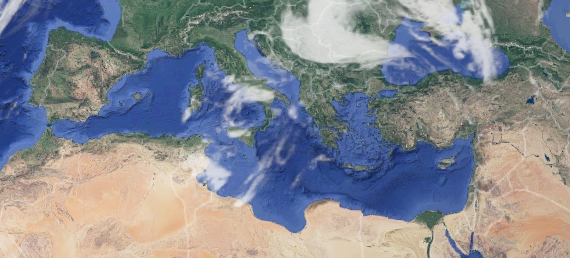
Abstract: The recent (twentieth century) and future (twenty-first century) climate evolution in the Mediterranean region is analyzed in relation to annual mean global surface temperature change. The CMIP5 (Coupled Model Intercomparison Project, Phase 5) simulations, the CRU (Climate Research Unit) observational gridded dataset, and two twentieth century reanalyzes (ECMWF, European Center for Medium range Weather Forecasts) and NOAA ESRL (National Oceanic and Atmospheric Administration-Earth System Research Laboratory) are used. These datasets to large extent agree that in the twentieth century: (a) Mediterranean regional and global temperatures have warmed at a similar rate until the 1980s and (b) decadal variability determines a large uncertainty that prevents to identify long-term links between precipitation in the Mediterranean region and global temperature. However, in the twenty-first century, as mean global temperature increases, in the Mediterranean region, precipitation will decrease at a rate around − 20 mm/K or − 4%/K and temperature will warm 20% more than the global average. Warming will be particularly large in summer (approximately 50% larger than global warming) and for the land areas located north of the basin (locally up to 100% larger than global warming). Reduction of precipitation will affect all seasons in the central and southern Mediterranean areas, with maximum reduction for winter precipitation (− 7 mm/K or − 7%/K for the southern Mediterranean region). For areas along the northern border of the Mediterranean region, reduction will be largest in summer (− 7 mm/K or − 9%/K for the whole northern Mediterranean region), while they will not experience a significant reduction of precipitation in winter.
Reference: Lionello P, Scarascia L (2018) The relation between climate change in the Mediterranean region and global warming. Regional Environmental Change, 18 (5), 1481-1493. https://doi.org/10.1007/s10113-018-1290-1
